March 26, 2015 | Posted in JAZZ, ROCK | By Jason Sositko
Experimental rock, funk, and a bit of Jazz
The electric music of Miles Davis, a style of music that would form almost his entire discography from 1969 until his death at age 65 in 1991. Typically the music Miles recorded from 1969-1975 before the 5 year exile is considered the best of the electric period.
Albums like In a Silent Way, Bitches Brew, Big Fun, and Get up With It prove an undeniable ability to create new and invigorating music. Sometimes only hinting at jazz, and other times destroying it.
Personally I love all of Miles Davis’ Music, but the post 1968 music really does it for me, always searching and sometimes failing on the same album. As it is always unpredictable, and revealing new things after each listen, I can not get enough of the music.
Not everyone liked Miles electric
The electric Miles did not make everybody happy however: Many establishment critics and fellow musicians of his own era couldn’t reconcile electric pianos and fender basses, wah wah pedals, and the back beats galore, see Jack Johnson for proof.
Personally I have come to realize, after 20 years of dissecting the music inside out, I truly believe the electric music will be the music of Miles’ most remembered and admired. I know, that is a bold statement, and it is not meant to diminish any other time period of his music, but the early electric music is only now being analyzed and put it in its proper perspective.
It also does not hurt that the music is perfect for today’s iPod generation. Consider all the different genres people are into today, and how many styles are being fused together? A younger crowd can get excited by this funky rock hybrid, when to them, the acoustic jazz sounds like granny music. I don’t happen to think that way, but it is a reality that the younger crowd gets the electric music more easily than the post bop.
Consider this, most people would not realize how important Miles was to hip-hop, trance music, drum & bass, and musics probably not even thought of yet.
Just recently I re investigated the March 7, 1970 Fillmore concert, and I swear it was a new music completely, totally different in sound than a few months before and a few months after?
That’s the way Miles electric is, always on the move, breaking new ground, and never staying in one place too long. Miles was rarely ever guilty of caring what critics, musicians, or even fans thought.
Go Ahead John From Big Fun
Miles Gets His Groove On.
Many people believe Miles Davis’ best or worst attribute, depending on your perspective, was his restless musical spirit. Those establishment jazz critics were all on board with Miles as long as his restlessness stayed within their nice little jazz box.
Once Miles ventured into rock and funk territory, many of those critics turned to stone, or tore into him with hooks and claws. The most ignorant claim was that Miles “Sold Out”. In fact, that might have been what Miles wanted, he did want to connect with young black audiences, and that certainly wouldn’t have hurt sales.
The currency Miles was after wasn’t money, but rather his legacy, and that legacy to him, needed to include black approval I believe. I have a hard time identifying anything that remotely sounds like “selling out”. Would you not have to compromise your integrity to sell out?
Who in the hell would play this type of instrumental music on 1972 top 40 radio? The music of the 69-75 was the direct opposite of what a sell out is, Long drawn out compositions, complex rhythms, and atonal at times, sometimes without melody.
Miles did indeed bring the funk to the forefront, but Miles’ funk was a different kind of funk, it evolved by 1973 to be a thick stew of hard funk rhythms, with at times, swirling droning bass grooves, typically up tempo, with plenty of African or Afro-Cuban poly rhythms.
Miles Runs the Voodoo Down
When you consider 1970’s Bitches Brew as a whole, you realize there is a lot of stuff going on there. You also realize a whole lot of avant-garde, bizarre “for Miles at least” music is being created off the cuff.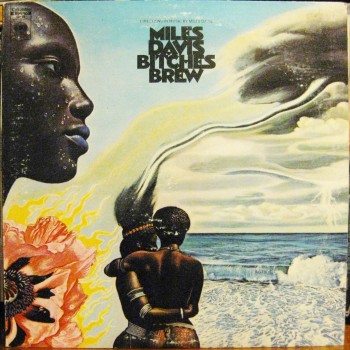
The title track, “Spanish Key,” and “Sanctuary” are full of avant-garde electronic sounds, reminiscent of Karlheinz Stockhausen or some krautrock band or something.
Over all, the album does have a quiet funk underneath, “a lot of the live music during this time has this sound too”, the funk is subtly there, but Miles hasn’t quite driven the funk home yet.
The one exception, and the most commercial of the Bitches Brew tracks is “Miles Runs the Voodoo down”, a straight from the Sly and the Family Stone bass groove bag dominates the track. This groove persists the entire 14 minutes, and definitely was a middle finger to the jazz establishment.
To my ears, this is where the real Miles, at least the deep down in his heart Miles that wanted to connect again with where the black audience was. Funny thing about Miles, try as he might during the 70’s to “sell out” to black audiences, “I really believe Miles wanted to sell records and be as popular as Sly and the Family Stone”, but Miles I believe was incapable of creating shallow juke box music.
Also “Miles Runs the Voodoo Down” happens to feature one of the greatest trumpet solos of all time in my opinion. Miles really drives this one home.
Miles had some ups and downs of course, but he was at his peak during this 68-75 time period, he was 44 years old in 1970! Most jazz instrumentalist long reach their peak by age 35, and yet Miles’ most virtuosic trumpet playing was after the age of 40.
As I am writing this post, I am in the middle of Side 3 of the vinyl copy of 1975’s Agharta and the track “Interlude” to be precise. 26 minutes of swirling funky grooves and percussion overload, Miles fills in some organ touches here and there, Cosey and Lucas do their thing on guitar.
But Miles just has this wah wah deal going on, like Hendrix on trumpet, snaky and street wise all at once. Miles’ electric years trumpet playing is grossly underrated.
The critics complain that Miles loses that cracked vulnerable sound with all the effects, I don’t buy it, he still sounds pretty damn unique and his tone still cuts like a skilled surgeon. I do feel the street vibe when I hear his trumpet during this time period.
In Concert: Live at Philharmonic
1973’s In Concert is one of the most overlooked of Miles Davis’ Electric Albums, and essentially serves as On The Corner/Get Up With It Live.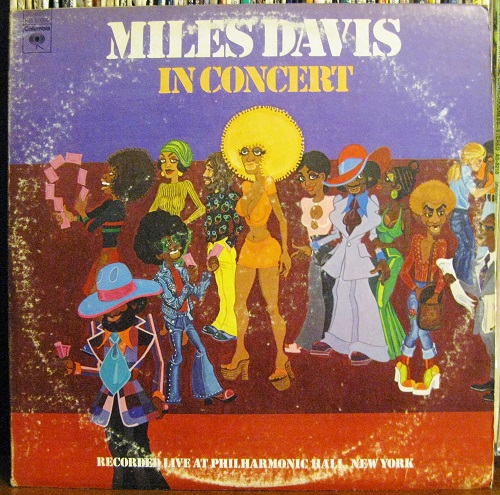
“Rated X” is interesting to me, you get that unsettling fast drum n bass drone dance beat, but the band goes off into funkier and more satisfying territory. Then you have fine versions of “Honky Tonk” and “Black Satin”, then and a side long live version of “Ife”.
Almost all the music after 1971 for Miles has this earthy vibe, the strange noises and percussion combinations.
This is a layered funk, a funk that may owe something deep down in it to James Brown. Honestly what’s going on here, is an off the cuff free funk jam, and doesn’t bring to mind Brown’s “Cold Sweat” or anything.
Busy pulsating rhythms rule the concert, melody doesn’t seem to have much of a place in this music, and really all but disappears after 1973 until the early 80’s comeback.
The lack of melody probably won’t thrill the classic jazz fan, you got to FEEL this music, its something that is absorbed over time. Funk Miles can grab you, but some times it has to be a meet you half way proposition. Miles was playing a new form of music here.
That’s OK with me, Different music is not bad music, no matter how the purists feel. I am a music fan, not just a jazz fan. Honestly though, had not Miles introduced me to jazz, it’s likely I would not have discovered it.
There is a lot of color to this music, Khalil Balakrishna on sitar, Badal Roy on tablas, James Mtume on percussion, Al Foster on Drums, and Cedric Lawson on electric piano and synthesizer.
I do think the band that followed this band was a tighter band, the Band with Pete Cosey and Reggie Lucas on Guitars, (Agharta and Pangaea), that band had real sense of groove. In Concert reviewed below sounds like the beginnings of that style. The odd melding of sitar and tabla with jazz funk rhythms makes In Concert a real underrated listen.
Dark Magus: Heavy Metal Voodoo Funk
legendary jazz funk guitarist Pete Cosey had passed away May 31st 2012 at the age of 68. Pete Cosey was a beast of a guitarist, and any one familiar with the Miles Electric music has heard of Pete Cosey, especially the “Cosey Band”.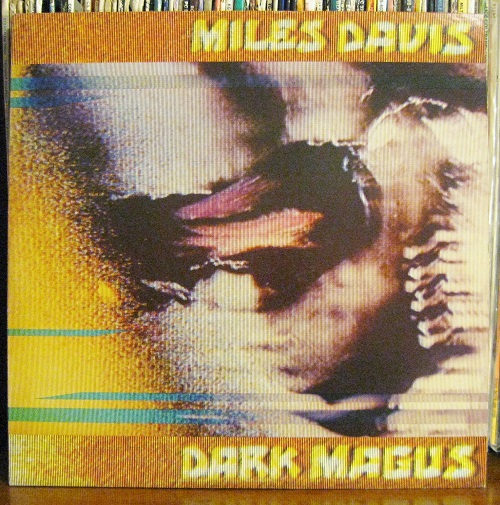
The Cosey band was an affectionate name for the Davis Voodoo funk bands of 1973-1974, and for my money, Dark Magus Live at Carnegie Hall 1974 is the pinnacle of this style of music.
Dark Magus was released in 1977 during Miles’ lost period originally only in Japan, then finally issued on CD in 1997.
If your faint of heart and can’t really get passed the Birth of the Cool and Miles Ahead style Miles Davis, Dark Magus Might seem like a sonic rape, this music is unrelenting chugging funk, with African drum beats, pounding high hats, and stab and jab trumpet from Miles.
But the dense soup of sound is what’s of note on Dark Magus, thick slabs of jazz funk beef, with droning bass, heavy metal guitars, and slippery sax from the perennial underrated David Liebman and lesser known, but still interesting Azar Lawerence.
3 guitarist, the mentioned Pete Cosey, Reggie Lucas and newcomer Dominique Gaumont, “reportedly Miles thought Gaumont sounded like Hendrix or something”.
A lot is going on in this music, with a total of 9 musicians, including the bass of Michael Henderson and the stellar drums of Al Foster and James Mtume.
Dark Magus’ biggest strength lies in its raw earthy character, it brings visions of a sweltering summer evening in a concrete jungle , people milling about drinking beer and smoking what they got.
I kid You not, Dark Magus is like Heavy Metal Funk Jazz, It makes Agharta and Pangaea seem like new age mood music in comparison. this is one of those albums I don’t think has been truly discovered yet by the young ones that lift the beats.
On the Corner
To the neo con jazz critic On the Corner was the end of the line, most didn’t have much interest in Miles after Bitches Brew was released, but On the Corner was universally not liked, even the rock critics couldn’t digest it.
The musicians hated it because of the lack of track listings and musician credits. hearing this music 40 years later, it’s obvious how important this album has been to modern contemporary music.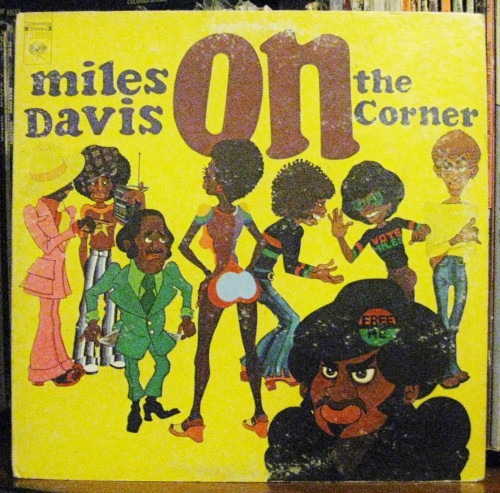
Stark repetitive drums and bass, with swirling, out of context in many cases saxophones, then you get splice after splice in post studio edits, On the corner for as experimental as it was, still has serious street vibe funk appeal.
The earthy production and disjointed rhythms actually end up creating a new rhythm not heard before “Miles funk” is the best way to describe it, this album really is its own entity, it is sort of a stand alone album.
Just listen to the first few minutes, that’s funk! but it’s Miles funk. See what I mean about street wise funk? Very earthy, almost a sleazy sound, very unique.
It still has that Sly and the Family Stone rhythm foundation that Miles expertly crafted into his own personal contemporary, rock, or r&b sound.
The Cosey Band
1974’s Get Up With, with that album’s “Calypso Frelimo,” is the perfect example of this thick hard funk approach Miles was striving for. Dark Magus and the live Japan Concerts from 1975. Agharta and Pangaea really bare fruit on this style.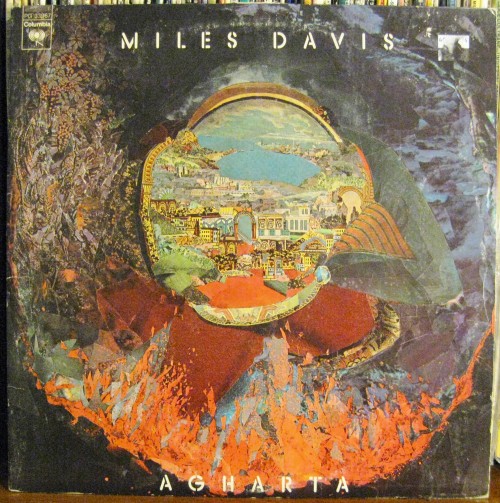
This band, also known as the “Cosey band”, named for guitarist Pete Cosey was probably the best live band of the electric period, as this band had Reggie Lucas on guitar, and Michael Henderson on bass as well.
The Cosey band were together for a solid 2 years as a working band, with David Liebman, Sonny Fortune, John Stubblefield, and Sam Morrison filling in.
The 80’s music, especially the live concerts are well worth hearing, the group interplay can get as wild as the mid 70’s band sometimes.
Here is a fantastic article with in-depth discussion on the Japan concerts Agharta and the infamous 1972 album On the Corner. The article goes in-depth about other things touched upon here in this article.
Calypso Frelimo from Get Up With It
The quintessential Cosey Band track
Electric Miles Sidemen
Keyboards:
(Chick Corea) Chick is best known for his own solo work and as the leader of the fusion band Return to Forever, Chick played on Bitches Brew and In a Silent way, he can also be seen on the Isle of Wight and Copenhagen ’69 DVDs with Miles.
(Keith Jarrett) Keith Jarrett got his start with Saxophonist Charles Lloyd in the mid 60’s. Jarrett joined Miles for the Isle of Wight show, Corea and Jarrett on the same tour! Jarrett does not have a whole lot positive to say about electronics these days, as he is almost exclusively a trio performer on acoustic piano now, he is quite simply one of the greatest pianists in jazz history.
(Herbie Hancock) Herbie a jazz giant in his own right, who probably had the most cross over success of any of the Davis former sidemen. Hancock was on board for In a Silent Way and Bitches Brew, then played on Jack Johnson as well.
Herbie’s own Mwandishi band broke new ground in its own right, and his Headhunters enjoyed incredible jazz funk success in the mid 70’s. Whether it was the second great quintet or his own classic Blue Notes of the 60’s Herbie is Herbie, nuff said. Herbie, with Miles, is known for the farfisa organ solo on “Right Off” from A Tribute to Jack Johnson.
(Joe Zawinul) Joe Zawinul who was born in Vienna Austria in 1932, came to America and found success with Cannonball Adderley, then on to Miles for Bitches Brew and In a Silent Way, Joe penned the compositions, “In a Silent Way” and Pharoahs Dance respectively, Joe went on to co-found the fusion band Weather Report with Wayne Shorter, a band that lasted 15 years.
Saxophone:
(Wayne Shorter) Wayne Shorter, quite possibly the greatest living jazz composer, his own Blue Notes from the 60’s are classics, his compositions with the Davis second great quintet are stone classics, “Footprints”, “Dolores”, and “Nefertiti” to name a few.
Wayne as mentioned above co-founded Weather Report with Joe Zawinul. Wayne plays some mean Soprano sax on much of the early electric Miles stuff, his last show with Miles is heard on Live at the Fillmore East, for more of the same style.
(Gary Bartz) Gary Barely had a cup of coffee with Miles, but oh that Coffee is 100% pure Colombian, His appearance on Live Evil and the 6 CD Cellar Door Concerts, is quite frankly, some serious primo Alto Sax playing, “What I Say” on live evil? Wow! love that extended solo, Bartz’s own Libra and Another Earth albums are also well worth acquiring.
(Sonny Fortune) Sonny replaced David Liebman on sax, he appeared on Big Fun, Get Up With It , Agharta and Pangea. sonny also had some fine records of his own during the 70’s, that in the free bop and funk style.
(David Liebman) David Liebman is quite simply one of the most underrated saxophonist of the last 40 years, his work with Miles on Tenor, Soprano, and, Flute is always fantastic, but Liebman’s best work is his own.
Whether a big band, quartet, quintet or duo. All you need to hear is Dark Magus to see why Miles liked Liebman so much.
(Bennie Maupin) If you’re not familiar with Bennie Maupin, go out and get his album Slow Traffic to the Right. I love that album.
Also Lee Morgan’s Blue Note Double Vinyl At the Lighthouse is a another Maupin showcase, But its his haunting Bass Clarinet on Bitches brew that really sticks in my mind.
it really does add a spooky vibe to the already creepy music, Pharoahs Dance especially. Bennie also joined Herbie Hancock with the Headhunters.
Guitar:
(John McLaughlin) Miles sure had some great guitarists in his electric bands, John Mclaughlin probably the most famous, as he went on to form the fusion super group Mahavishnu Orchestra and do some albums with Carlos Santana.
John’s work from In a Silent Way, Bitches Brew Live Evil and Jack Johnson all stellar, and you can tell Miles really liked this guy, the studio banter on the Jack Johnson sessions is a great listen, Miles commenting “That’s some raunchy shit john” speaks volumes.
(Pete Cosey) The recently departed Pete Cosey probably as far as being an innovator on his instrument, should be mentioned in the same breath as John Coltrane and Charlie Parker for geniuses that Miles Worked with, Cosey could play with as much fire and bravado as Jimi Hendrix and as much blues as B.B. King.
Cosey never gave the secrets of his alternate tunings and unusual effect combos away. Apparently this all went to the grave.
Dark Magus, Agharta and Pangaea will blow your mind, if you’re a guitarist and never heard this guy, look out! you might never be the same. supposedly there are many concerts out there, that haven’t been released officially, hopefully this new bootleg series will bring some of them to light.
(Reggie Lucas) What a career this guys had, played from 72-75 in the Davis Band, then teamed up with James Mtume on many R&B and funk albums even won a Grammy for writing a song for Stephanie Mills called “Never Knew Love Like This Before”.
He also produce Madonna’s debut album and wrote the hit “Borderline” My hats of to Reggie, I always liked that tune, but man You held your own next to Cosey, you deserve a medal for that.
Bass:
(Dave Holland) Miles once famously said, “You can’t tell Dave too much or else you might break his spirit” This comment really gives some insight into how Miles handled his sidemen differently, sort of like a good baseball manager, some guys you got to put your arm around, some you gotta kick in the ass.
Miles was savvy enough to do both, Dave Holland is also a giant in his own right, as a leader and Bassist, in fact most of his ECM recordings are classics.
(Michael Henderson) Michael is one of the most sampled bass players of all time, is Motown grooves and fat tone were perfect for what miles was doing in the 70’s. after Bitches Brew, starting with the Live Evil and the rest of the Cellar Door sessions Henderson was with Davis all the way to the Japan Concerts of 1975.
The Cellar Door concerts are of particular note, as you can see that he is still searching for the tone and style he wants, the band has this sense of searching that makes the music unique.
Drums:
(James Mtume) As mentioned above James Mtume had major success with guitarist Reggie Lucas, but Mtume was a fine percussionist with the Davis Bands from 71 to 75, Mtume is the son of saxophonist Jimmy Heath.
(Jack Dejohnette) Jack was probably Miles Best drummer after Tony Williams, but Jack seemingly had more of a knack for back beat style drumming than Williams did, at least at this point. Jack also has many fine records of his own, like Sorcerer and Album Album.
(Airto Moreira) Airto played on the Complete Bitches Brew Sessions that occurred after Aug. 1969, he can be seen and heard on the Isle of Wight Concert, as well as many of the live Fillmore Concerts.
Airto, married to singer Flora Purim is considered one of the greatest percussionists who ever lived, He played on Weather Report’s first album, as well as the first two Return To Forever non guitar albums.
( Al Foster) Al Foster is the longest tenured sideman of all in the Miles lexicon, he was with Miles from 1972 to 1985, though almost 6 of those years were during the Davis forced retirement.
Al was also one of the few people who had contact with Miles during this layoff, Dejohnette left the band and Miles knew he had to have foster, who Miles said “Man he just laid right there in the groove, he can really set up the rest of the band to play from”.
(Lenny White) Lenny White is most famous for being the drummer on the first seriously jazz rock Return to Forever album Hymn of the Seventh Galaxy, he also has some fantastic jazz rock album of his own, Venusian Summer in particular. Besides Bitches Brew, White also played on a fantastic Andrew Hill Album Passing Ships, that was only recently released.
Spanish Key from Bitches Brew
Where should you start with the Miles Davis’ electric period?
I will tell you right away if you can afford it, just get the Miles Davis Trumpet Case that has all the metal spine box sets released in the 90’s and 2000’s in it, but it won’t be cheap.
In a Silent Way will be the easiest album to warm up to, I recommend that as your first buy. Bitches Brew will sound “out there” at first, and might turn you off if it’s your first choice.
I never dreamed how vast and varied the lexicon of Miles Davis was, to think how many styles this man either created or helped create is astounding. Miles Davis is easily the most unpredictable jazz musician of all time, if not the greatest of all time.
*All vintage LP Cover photos from my own collection*
Related posts at Spacial Anomaly
Table of Contents
- Not everyone liked Miles electric
- Go Ahead John From Big Fun
- Miles Gets His Groove On.
- Miles Runs the Voodoo Down
- In Concert: Live at Philharmonic
- Dark Magus: Heavy Metal Voodoo Funk
- On the Corner
- The Cosey Band
- Electric Miles Sidemen
- Spanish Key from Bitches Brew
- Where should you start with the Miles Davis’ electric period?
Jason Sositko
Jason Sositko, a freelance writer and entrepreneur is a participant in the Amazon Services LLC Associates Program, an affiliate advertising program designed to provide a means for sites to earn advertising fees by advertising and linking to Amazon.com. I also use services such as Viglink and Skimlinks to earn income via links placed inside articles.
Leave a Reply
*
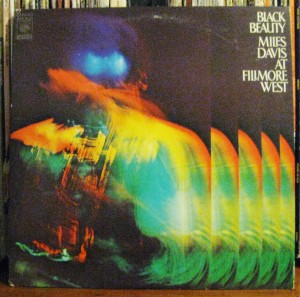
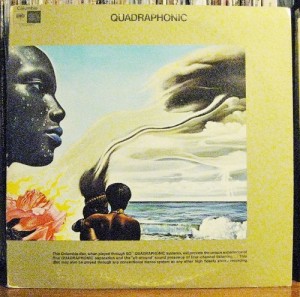
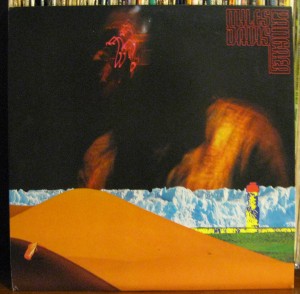
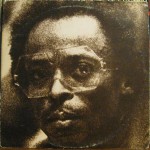
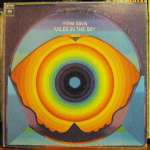
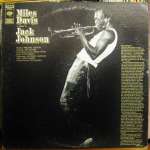
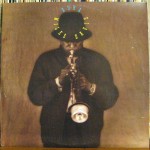








Be the first to comment.